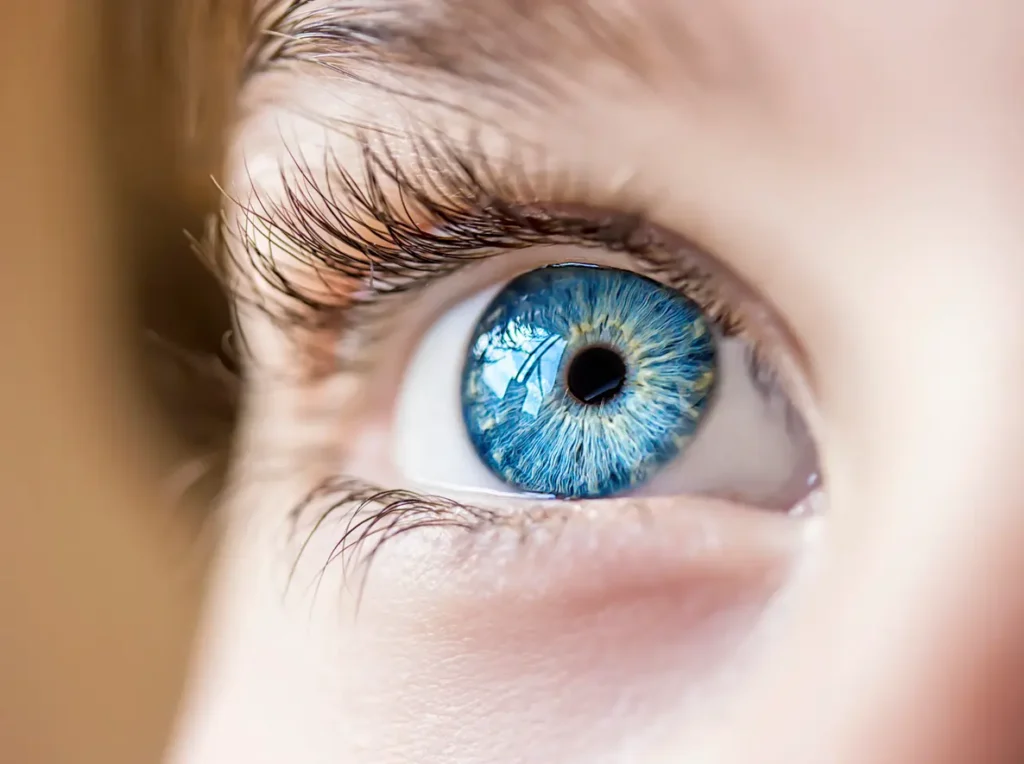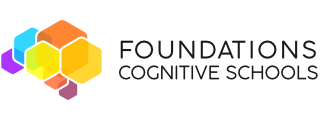
Story At-a-glance
- Vision is far more than 20/20 acuity—it’s a complex system involving the integration between eyes and brain that significantly impacts reading and learning.
- The visual system requires coordination of multiple skills: oculomotor function (eye movement control), binocular vision (eye teaming), accommodation (eye focusing), and higher-level visual processing skills.
- Common visual processing issues that affect learning include oculomotor dysfunction (causing lost place while reading), convergence insufficiency (where eyes struggle to maintain alignment), accommodative disorders (focusing problems), and visual processing disorders.
- These visual processing issues have profound academic impacts on reading fluency and comprehension, writing expression, mathematics, and can often masquerade as attention or behavior problems.
- Research shows that 80% of children with reading difficulties demonstrate deficiencies in saccadic eye movements, and 5-13% of school-aged children have convergence insufficiency, which is significantly more common in children with reading difficulties.
- Traditional school vision screenings miss most visual processing issues because they focus almost exclusively on distance visual acuity (20/20 test) and fail to detect 75% of vision problems that could impact learning.
- Red flags for visual processing issues include bright children who underperform, inconsistent academic performance, avoidance of reading, covering one eye when reading, headaches after visual work, and complaints about words moving on the page.
- Case studies demonstrate how addressing visual processing issues can transform learning: children previously struggling with reading, attention problems, or diagnosed with dyslexia showed significant improvements after proper vision intervention.
- Effective interventions include comprehensive developmental vision evaluations (by developmental/behavioral optometrists), specialized corrective lenses, and vision therapy (a customized program of exercises).
- Vision therapy has strong research support, with studies showing it’s significantly more effective than home-based exercises alone, with over 75% of children showing normal vision function after treatment for convergence insufficiency.
- Parents can advocate for their children by recognizing signs of visual processing issues, seeking comprehensive evaluations, documenting findings, exploring therapy options, and monitoring progress.
- Unlike some learning disabilities, visual processing problems are often highly treatable with the right approach, potentially unlocking a child’s true learning potential.
When a child struggles with reading and learning despite adequate instruction and cognitive ability, parents and educators often search for answers. Many investigate potential learning disabilities like dyslexia or attention disorders, yet frequently overlook a critical factor in the learning equation: visual processing. The common misconception that 20/20 vision ensures optimal visual function leaves many children with undetected visual processing issues that significantly impact their educational experience and performance.
Understanding Vision Beyond Acuity: The Complex Visual System
Vision is far more than simply seeing clearly. While visual acuity (the 20/20 measure) assesses how clearly a person can see at a distance, it represents just one small component of the visual system. Dr. David Dzik, a developmental optometrist, explains: “Having 20/20 vision simply means you can see a certain sized letter at a distance of 20 feet. It tells us nothing about how your eyes work together, how they focus up close, or how your brain processes what you’re seeing.”
The visual system involves complex integration between the eyes and brain, requiring coordination of multiple skills:
- Oculomotor Function (Eye Movement Control)
This includes three critical skills:
- Fixation: The ability to accurately aim the eyes on a specific point
- Saccades: The ability to move eyes quickly and accurately between points (critical for reading)
- Pursuits: The ability to smoothly follow a moving target
Research published in the Journal of Learning Disabilities found that 80% of children with reading difficulties demonstrated deficiencies in saccadic eye movements, causing them to lose place, skip lines, or miss information when reading.
- Binocular Vision (Eye Teaming)
This refers to how well the eyes work together as a team and includes:
- Convergence: The ability of both eyes to turn inward to view near objects
- Divergence: The ability of both eyes to turn outward for distance viewing
- Binocular fusion: The brain’s ability to form a single image from the two slightly different images from each eye
A study in the Journal of Optometry found that convergence insufficiency (difficulty keeping both eyes turned inward for near work) affects approximately 5-13% of school-aged children and is significantly more common in children with reading difficulties.
- Accommodation (Eye Focusing)
The ability to quickly and accurately change focus between different distances:
- Accommodative facility: The ability to shift focus quickly between distances
- Accommodative endurance: The ability to maintain clear focus for extended periods
- Accommodative accuracy: The ability to adjust focus precisely
Research published in Optometry and Vision Science demonstrated that children with reading difficulties were twice as likely to have accommodative disorders compared to children without reading problems.
- Visual Processing Skills
These higher-level skills involve how the brain interprets and uses visual information:
- Visual discrimination: Distinguishing differences in size, shape, color, and orientation
- Visual memory: Remembering what has been seen
- Visual-spatial processing: Understanding the relationship of objects in space
- Visual analysis/synthesis: Breaking down and putting together visual information
- Visual-motor integration: Coordinating visual information with physical movement
A comprehensive study in the Journal of Behavioral Optometry found that 85% of children with learning disabilities had significant deficits in at least one area of visual processing.
Common Visual Processing Issues That Impact Learning
Oculomotor Dysfunction
Children with eye movement disorders may:
- Lose their place frequently when reading
- Use a finger or marker to keep their place
- Skip lines or words when reading
- Have difficulty copying from the board
- Demonstrate short attention span for reading and close work
- Read word-by-word instead of with fluency
Dr. W.C. Maples of the Oklahoma College of Optometry notes, “Poor saccadic function can reduce reading speed by up to 50% and significantly impact comprehension, as the child expends mental energy on the mechanics of tracking print rather than on understanding content.”
Convergence Insufficiency
This common condition, where the eyes struggle to maintain proper alignment for near tasks, can cause:
- Words appearing to move or float on the page
- Double vision when reading
- Headaches or eye strain after short periods of reading
- Avoidance of reading or close work
- Difficulty maintaining concentration
- Covering or closing one eye when reading
According to research published in the Archives of Ophthalmology, convergence insufficiency treatment leads to significant reduction in symptoms and improved reading performance in children.
Accommodative Disorders
Problems with eye focusing can result in:
- Blurry vision, especially when looking from board to desk
- Difficulty sustaining focus for reading
- Headaches after reading or close work
- Fatigue during visual tasks
- Avoidance of detail-oriented tasks
- Holding reading materials unusually close or far
A study in Optometry & Vision Development found that children with accommodative dysfunction required three times longer to complete reading assignments compared to peers with normal visual function.
Visual Processing Disorders
Higher-level visual processing issues can cause:
- Difficulty distinguishing between similar letters (b/d, p/q)
- Poor reading comprehension despite adequate word recognition
- Challenges with math concepts requiring spatial understanding
- Messy handwriting or trouble staying within lines
- Difficulty remembering what was read
- Problems with organization of written work
- Reversals of letters or numbers beyond age 7
Dr. Leonard Press, a developmental optometrist and vision therapy expert, explains: “These children often have normal or even above-average intelligence, but struggle academically because their brains cannot efficiently process the visual information their eyes are sending.”
The Hidden Academic Impact of Visual Processing Issues
Reading Fluency and Comprehension
For children with visual processing issues, reading becomes a cognitive obstacle course:
- Tracking difficulties force the child to constantly refind their place, interrupting the flow of reading and taxing working memory
- Convergence problems cause words to appear double or blurry, requiring constant refocusing that depletes cognitive resources
- Visual discrimination issues make it difficult to quickly and accurately recognize letters and words, slowing the development of automatic word recognition
- Visual processing speed limitations mean the child may recognize individual words but process them too slowly to maintain comprehension of connected text
A landmark study in the Journal of Attention Disorders found that 16% of children diagnosed with ADHD actually had visual processing issues as the primary cause of their inattention during reading tasks.
Writing Expression
Visual-motor integration is crucial for writing, and challenges in this area can manifest as:
- Poor letter formation and spacing
- Inconsistent writing on lines
- Difficulty organizing thoughts on paper
- Slow and laborious writing process
- Resistance to writing assignments
- Large discrepancy between verbal abilities and written work
Research from Johns Hopkins University found that 60% of children with dysgraphia (writing difficulties) had underlying visual processing or visual-motor integration issues.
Mathematics
Visual processing is fundamental to mathematics, affecting:
- Alignment of numbers in columns
- Understanding of spatial concepts
- Interpretation of graphs, charts, and diagrams
- Recognition of patterns and sequences
- Geometry and measurement concepts
- Organization of work on paper
A study in the Journal of Learning Disabilities demonstrated that children with visual-spatial processing difficulties were three times more likely to struggle with mathematical concepts than peers without these visual challenges.
Attention and Behavior
Perhaps most significantly, undetected vision problems often masquerade as attention or behavior issues:
- Children with eye teaming problems may appear inattentive because they lose their place constantly
- Those with eye focusing issues may seem to have a short attention span for near work
- Children experiencing visual discomfort may be restless, fidgety, or avoidant during reading and close work
- Visual processing demands may cause fatigue that leads to acting out behaviors later in the school day
Dr. Eric Borsting, researcher at Southern California College of Optometry, notes: “We found that children with convergence insufficiency scored significantly higher on standardized scales for ADHD symptoms. After successful vision therapy, these attention measures improved dramatically, suggesting their ‘ADHD-like’ behaviors were secondary to visual dysfunction.”
Red Flags: Identifying Visual Processing Issues
Academic Red Flags
- Bright child who underperforms in reading or schoolwork
- Large gap between listening comprehension and reading comprehension
- Inconsistent performance (good days and bad days)
- Difficulty completing assignments within time limits
- Avoidance of reading or close work
- Poor test performance despite knowing the material
- Declining grades as visual demands increase in higher grades
Behavioral Signs
- Covering one eye when reading
- Holding reading material unusually close or far
- Head tilting during desk work
- Excessive blinking or rubbing eyes
- Difficulty copying from board to paper
- Short attention span specifically for visual tasks
- Fatigue or irritability after close visual work
Physical Complaints
- Headaches, particularly after reading or computer use
- Eyestrain or discomfort
- Blurred or double vision when reading
- Dizziness or nausea from visual tasks
- Words appearing to move on the page
- Burning or itching eyes after reading
Traditional School Screenings Miss Visual Processing Issues
Standard school vision screenings focus almost exclusively on distance visual acuity (the 20/20 test), missing the critical visual skills needed for reading and learning. Consider these limitations:
- School screenings check only distance vision, typically at 20 feet, while most classroom work happens at 16 inches to 3 feet
- They rarely assess eye teaming abilities like convergence, which is essential for reading
- Focus flexibility and stamina are not measured, though these skills are required for shifting gaze from board to desk
- Visual processing skills are completely omitted from standard screenings
- Acuity is typically checked only in high-contrast conditions, unlike the varied visual demands of actual reading materials
A study published in Optometry and Vision Science found that standard school screenings failed to detect 75% of children with vision problems that could impact learning.
Case Studies: The Transformative Impact of Addressing Visual Processing Issues
Case 1: The “Struggling Reader”
Eight-year-old Aiden was reading well below grade level despite phonics interventions and tutoring. His teachers noted he was bright in class discussions but “lazy” when it came to reading tasks. A comprehensive visual evaluation revealed significant convergence insufficiency and oculomotor dysfunction. After three months of vision therapy focusing on eye teaming and tracking skills, Aiden’s reading fluency improved by 20 words per minute, and his comprehension scores moved from the 25th to the 65th percentile.
Case 2: The “Attention Problem”
Ten-year-old Sophia was being evaluated for ADHD due to fidgeting, avoidance of desk work, and apparent inattention during reading. Before starting medication, her parents sought a developmental vision evaluation, which identified accommodative insufficiency—she couldn’t sustain clear focus for reading. Following vision therapy and reading glasses specifically prescribed for near work, her classroom attention improved dramatically, and her teacher reported she no longer showed signs of ADHD in the classroom.
Case 3: The “Dyslexic” Child
Twelve-year-old Marcus had been diagnosed with dyslexia based on his letter reversals and reading difficulties. However, a comprehensive vision evaluation revealed normal phonological processing (the core deficit in true dyslexia) but significant deficits in visual discrimination and visual processing speed. After vision therapy addressing these specific visual processing skills, his reading improved by two grade levels within six months, and letter reversals resolved completely.
Effective Interventions for Visual Processing Issues
Comprehensive Developmental Vision Evaluation
Unlike a standard eye exam, a developmental vision evaluation assesses all aspects of visual function relevant to learning:
- Oculomotor control (tracking)
- Binocular vision (eye teaming)
- Accommodative function (focusing)
- Visual perceptual/processing skills
- Visual-motor integration
- Visual information processing speed
These evaluations are typically performed by developmental optometrists, also known as behavioral optometrists, who specialize in how vision affects learning and development.
Corrective Lenses
Many children with visual processing issues benefit from specialized glasses that are different from standard prescriptions:
- Bifocal or progressive lenses that provide specific support for near work
- Prism lenses that help with eye alignment issues
- Yoked prisms for visual-spatial processing difficulties
- Tinted lenses for visual sensitivity or pattern glare
Dr. Nancy Torgerson, a developmental optometrist, explains: “These are not typical glasses that just make vision clearer. They’re therapeutic tools precisely prescribed to reduce visual stress and make the visual system more efficient during reading and learning tasks.”
Vision Therapy
Vision therapy is to the visual system what physical therapy is to the body—a customized program of exercises designed to develop and enhance fundamental visual skills and processing. Research-supported vision therapy programs typically:
- Are conducted under the supervision of a developmental optometrist
- Involve 1-2 weekly in-office sessions plus home reinforcement activities
- Continue for 3-9 months depending on the severity of issues
- Include activities that progressively challenge the visual system
- Incorporate technology like computerized training programs
- Utilize specialized equipment that isolates and develops specific visual skills
A randomized clinical trial published in the Archives of Ophthalmology found that office-based vision therapy was significantly more effective than home-based exercises alone or placebo therapy for convergence insufficiency, with over 75% of children showing normal vision function after treatment.
Conclusion: Seeing the Whole Child
Visual processing is a critical yet often overlooked factor in learning. When a child struggles to read or learn despite adequate instruction and effort, a comprehensive visual evaluation may reveal issues that no amount of traditional educational intervention can resolve.
The good news is that many visual processing issues respond well to appropriate intervention. Unlike some learning disabilities, visual processing problems are often highly treatable with the right approach. Through proper identification, targeted therapy, and appropriate accommodations, children with visual processing challenges can overcome significant barriers to learning.
As Dr. Lynn Hellerstein, a pioneer in developmental vision, states: “We need to move beyond the antiquated notion that 20/20 vision means perfect vision. The intricate visual skills required for reading and learning go far beyond seeing clearly. By addressing these fundamental visual skills, we often unlock a child’s true learning potential.”
When we expand our understanding of vision beyond 20/20, we gain powerful new insights into why some children struggle and, more importantly, how to help them succeed.
References
- Borsting, E., Mitchell, G. L., Kulp, M. T., et al. (2012). Improvement in academic behaviors after successful treatment of convergence insufficiency. Optometry and Vision Science, 89(1), 12-18.
- Convergence Insufficiency Treatment Trial Study Group. (2008). A randomized clinical trial of treatments for symptomatic convergence insufficiency in children. Archives of Ophthalmology, 126(10), 1336-1349.
- Garzia, R. P., Richman, J. E., Nicholson, S. B., & Gaines, C. S. (1990). A new visual-verbal saccade test: the Developmental Eye Movement test (DEM). Journal of the American Optometric Association, 61(2), 124-135.
- Granet, D. B., Gomi, C. F., Ventura, R., & Miller-Scholte, A. (2005). The relationship between convergence insufficiency and ADHD. Strabismus, 13(4), 163-168.
- Hammill, D. D., Pearson, N. A., & Voress, J. K. (2014). Developmental Test of Visual Perception, Third Edition (DTVP-3). Pro-Ed.
- Hussey, E. S. (1990). Temporal characteristics of visual system dysfunction in learning disabled children. Journal of the American Optometric Association, 61(6), 436-440.
- Kulp, M. T., & Schmidt, P. P. (1996). Visual predictors of reading performance in kindergarten and first grade children. Optometry and Vision Science, 73(4), 255-262.
- Maples, W. C. (2003). Visual factors that significantly impact academic performance. Optometry, 74(1), 35-49.
- Scheiman, M., & Wick, B. (2019). Clinical Management of Binocular Vision: Heterophoric, Accommodative, and Eye Movement Disorders (5th ed.). Lippincott Williams & Wilkins.
- Shin, H. S., Park, S. C., & Park, C. M. (2009). Relationship between accommodative and vergence dysfunctions and academic achievement for primary school children. Ophthalmic and Physiological Optics, 29(6), 615-624.
- Solan, H. A., & Ciner, E. B. (1989). Visual perception and learning: Issues and answers. Journal of the American Optometric Association, 60(6), 457-460.
- Vision Council of America. (2004). Making the grade: An analysis of the connection between vision and learning. Alexandria, VA.
Note: This blog post is intended for educational purposes only. While the information presented is based on scientific research, individual situations vary. Please consult with qualified professionals for proper assessment and individualized recommendations.



